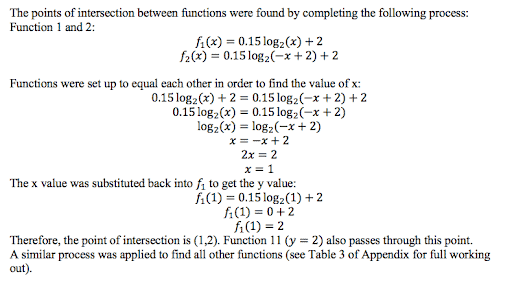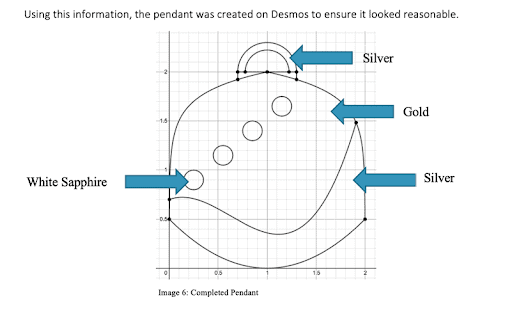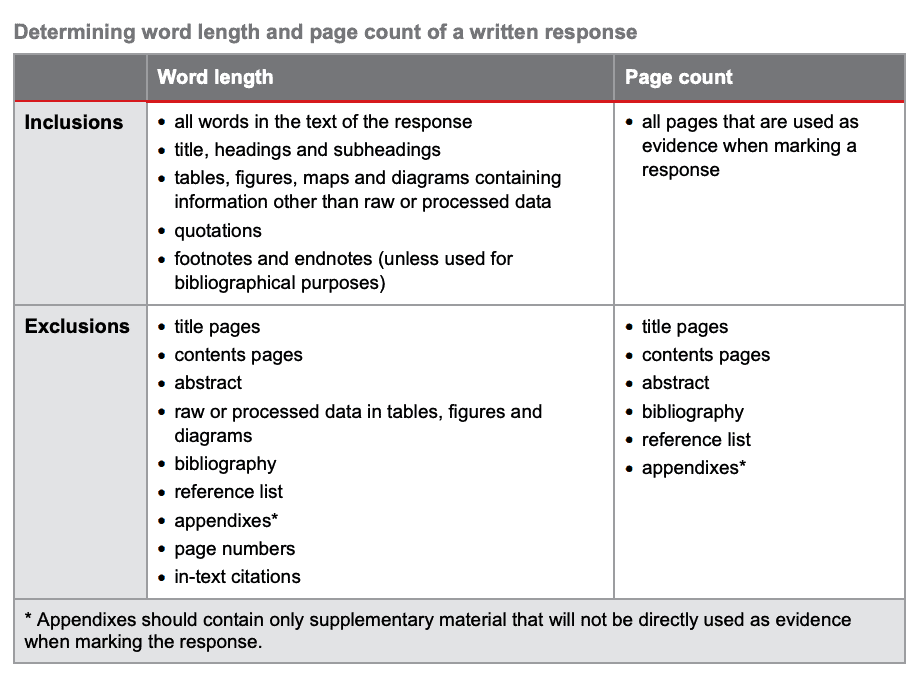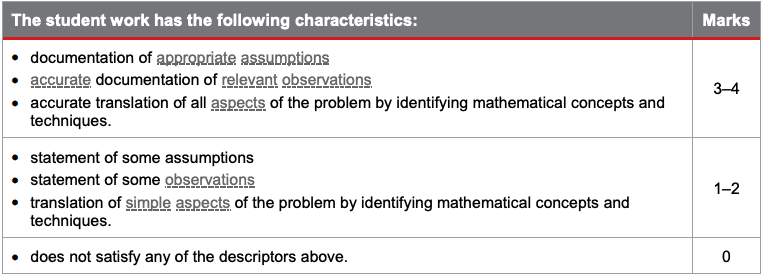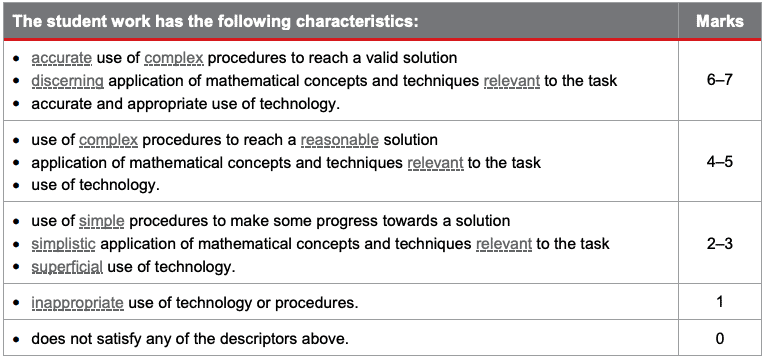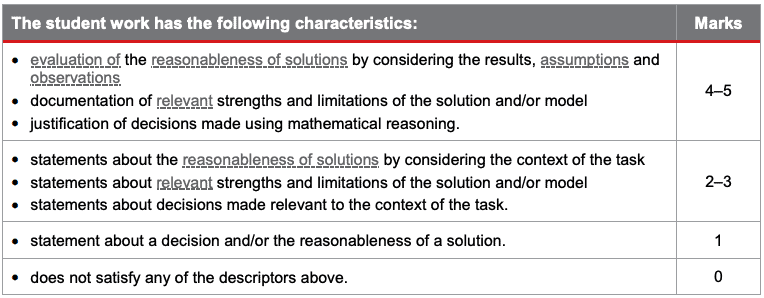Feeling a little overwhelmed and aren’t sure how you’re meant to approach your problem-solving and modelling task (PSMT) for QCAA Maths Methods?
It may seem a little out of left field that you need to write a report instead of complete an exam that covers different mathematical topics, but don’t worry — we’ll guide you through how to structure it!
What are you waiting for? Let’s get started on familiarising ourselves with the QCAA Methods PSMT.
What is a Problem-Solving and Modelling Task (PSMT)?
Structure of a PSMT for Maths Methods
Tips for Writing a PSMT
Breaking Down the Instrument-Specific Marking Guide (ISMG)
What is a Problem-Solving and Modelling Task (PSMT)?
A PSMT is an assessment task designed to evaluate your ability to respond to an investigative mathematical scenario or stimulus. The specific task provided will be related to the mathematical concepts and techniques you have been learning in class.
You will be required to create a written report, no longer than 10 pages and 2000 words, to address the following assessment objectives:
- Selecting, recalling and using facts, rules, definitions and procedures
- Comprehending mathematical concepts and techniques
- Communicating using mathematical, statistical and everyday language and conventions
- Evaluating the reasonableness of solutions
- Justifying procedures and decisions by explaining mathematical reasoning
- Solving problems by applying mathematical concepts and techniques
The other key features of this report include providing a response that addresses the real-life application of mathematics, using technology, using tables/graphs/diagrams, and following the structure of a report (past tense and third person). Now that you know what a PSMT is all about, let’s find out how to set it out and what each section needs!
Struggling your way through the PSMT? Here’s how to decide whether to drop down to General Maths for your QCE or not!
Structure of a PSMT for Maths Methods
#1: Title Page
Should include: the title of the report, your name, the year, and a relevant image.
#2: Contents Page
A clear table of contents that correlates with the different sections of the report is required. Learn how to create a table of contents page on Microsoft Word here.
#3: Introduction (100 words)
Explain the purpose of your QCAA Methods PSMT (what is the scenario/context) and list the contents of the report (each step that was taken to develop and evaluate your solution).
Example: This report consists of the formulation, evaluation and justification of a pendant design. Factors, such as, target consumer, size, weight, hole for stringing, materials and aesthetic, will be utilised to guide the decision choices made. The pendant will consist of a variety of types of functions, including logarithmic, parabolic, cubic and circular. The mathematical feasibility and practicality of the pendant will also be considered by utilizing both technological and mathematical methods and procedures, including transformations and graphing of functions, simultaneous equations and Desmos. Strengths, limitations and recommendations will also be given about the pendant.
#4: Background (50-150 words)
Discuss any considerations or research you had to do in order to address the task
Example: Research was conducted on currently existing pendants, which were used to support the design of the new pendant. Both fashion jewellery and fine jewellery were investigated in order to determine appropriate materials, dimensions and designs.
#5: Observations and Assumptions (200-350 words)
Observations
These are the things you may have come across while researching (so you’ll have a few in-text references here). It can be effective to use diagrams and statistics. Aim for at least four.
Examples:
- The density of the materials used can heavily impact the weight and durability of the pendant
- Pendants sizes average between 9.5-25.4mm
- Fashion pendants on average cost between $10-$99 (Lovisa, 2020)
- All measurements must be positive values, so when graphing, pendant must entirely be in the first quadrant to avoid negative values
Assumptions
As the task can be somewhat vague, some assumptions will have to be made in order to make it more specific. Aim for at least four.
Ensure you justify the reasons for/implications of each assumption.
Examples:
- The pendant is for the average adult consumer, and will be considered ‘fine jewellery’ and so will have dimensions, weight and cost as such
- The entire area of the pendant will have the same depth (meaning that the pendant will be flat), as creating variety in depth will make the volume of the pendant difficult to calculate
- The domains and ranges of the functions will correlate to the dimensions of the pendant (i.e. 1 unit = 1cm)
- The cost calculated is the estimated cost for the materials of the pendant, not including the construction cost
#6: Developing a Solution (300-400 words)
Design/Model Considerations and Decisions
Discuss the design choices you made using mathematical concepts and techniques to justify. Reference other designs/models and how they have impacted your design choices.
Refer to your observations and assumptions and how they have influenced your design choices.
Example: As circles are a common shape of pendant, it was decided that this pendant should have a similar shape. Along with the observations taken about pendant size, it was decided that this pendant should have both a length and width of 2cm. Instead of using just a circle function, however, in order to make it more unique, the pendant’s shape was made of two logarithmic functions and a parabola. When the first logarithmic function was created, the second one was the same but translated vertically (across the y-axis). This meant that they intersected perfectly at (1,2) – the top middle of the pendant. The logarithmic functions ranged from 0.5 to 2. As both functions would continue straight down as the range decreased, a parabola was required to create the ‘bottom half’ of the ‘circle’. To make sure it was equal, the parabola had a minimum at (2,0)…
Calculations (few words, insert screenshots of calculations instead)
This section can have multiple subdivisions within and differ widely depending on what exactly the task is. Generally, however, the use of technology must be demonstrated, the mathematical concepts used should be explained and appropriate and accurate mathematical concepts and techniques should be applied.
Note that in the main body of the report, you should include only one of each type of calculation; include the rest in the appendix.
For the pendant-designing task used in the examples, the subdivision consisted of Determining Functions, Determining Points of Intersection, Determining Area, Determining Volume, and Calculating the Weight and Cost of Materials.
Example:
Completed Design/Model
Include the completed design/model here and make sure that it is appropriately labelled (points of intersection could also be labelled on example below).
Example:
#7: Evaluation of Results (500-600 words)
Reasonableness
Discuss which aspects of your design/model are reasonable and which aspects are unreasonable and provide justification. Explain how the unreasonable aspects could be improved.
Include aspects that were not taken into account and may have an effect on the design/model. Also, revisit the assumptions and consider any revisions that could be made to improve your design/model.
Example: The dimensions, materials and the domains and ranges of the functions that make up the pendant are reasonable as they are based on current pendant designs. The reasonableness of the results has been assessed by both plotting the functions on Desmos and simultaneous equations. Although Desmos was generally informative, it was not quite accurate, as some functions did not appear to intersect… It is important to note that the construction cost of the pendant was not taken into account, and therefore the overall cost of designing and creating the pendant is likely to be much higher.
Strengths
Discuss the strengths of your design/model, such as the design choices, development process, calculations and practicality in terms of the real world.
Example: The main strength of the pendant is that all the functions intersect perfectly, as all the points of intersection were successfully solved for. In terms of the real world, this means that the pendant can be built accurately according to these calculations with no gaps between portions of the pendant. This also meant that the area and volume of the pendant could be calculated accurately using integration. Another strength of the pendant is that there is a loop that is big enough for a chain of 5mm width to go through. These factors, along with the estimated cost and weight being $628.35 and 16.5g respectively, mean that this pendant is suitable for the average adult consumer.
Limitations
Discuss the limitations of the design/model of your QCAA Methods PSMT, such as the design choices, development process, calculations and practicality in terms of the real world. Explain how you would address these limitations (further calculations, more research, other considerations etc.)
Example: A limitation of this report is that the physical construction of the pendant was not considered. If and how the materials can be cut/shaped into the designed format is unknown. Although the materials were chosen according to existing pendants, the weight and costs of the materials are only estimations and based on little research. More research needs to be conducted about the density, weight and construction costs of the materials. Another restriction is that the surface of the pendant is flat, as although practical, it gives a 2D element to the pendant, thus reducing its appeal. Therefore, it is recommended that further research is conducted into the physical construction of the pendant to make sure it is practical.
#8: Conclusion (50 words)
Sum up the report by producing a final response to the task. Discuss the key findings of the process and evaluation, as well as how it could be improved at the end of your QCAA Methods PSMT.
Example: Through the evaluation of other pendants, consideration of all observations and assumptions and accurate application of mathematical processes, a pendant was successfully designed. Although there are some areas of improvement and further investigation into the physical construction of the pendant is recommended, overall, the pendant is unique, practical and visually appealing.
#9: Bibliography
List all of your references here. Check which style of referencing your teacher wants.
#10: Appendix
All your tables, graphs, diagrams and calculations that weren’t in the main body of the report should be here. This section is not marked and does not count towards the word or page count.
Still stuck? Check out our local team of Brisbane Maths Methods tutors!
Tips for Writing a PSMT for QCAA Maths Methods + A Breakdown of the ISMG
Not sure what mark you should be aiming for in the PSMT? Here’s what mark you need to be on track for an ATAR above 90!
#1: Experiment with different designs/models before choosing one — and it’s okay if your design/model is not perfect, you can talk about its limitations in the evaluation section.
#2: The graphing calculator on Desmos is a great way to graph functions and test the reasonableness of your design.
#3: The WolframAlpha calculator is a great tool to help solve or double check any complex calculations.
#4: Ensure all tables, graphs, images and diagrams are appropriately labelled.
#5: Aim for at least four observations and four assumptions.
#6: Ensure that your report can be understood independently of the task sheet and that it is presented as a real report and not a school assignment.
#7: See the table below for what is and isn’t included in the page and word count for this assessment.
Breaking Down the Instrument-Specific Marking Guide (ISMG)
The ISMG is split into four distinct criteria: Formulate, Solve, Evaluate and Verify, and Communicate. Let’s explore what each of them is about!
Formulate
This criterion is all about your ability to effectively plan. This includes:
- Considering all the different aspects of the task and addressing them in your observations and assumptions
- Your observations and assumptions being accurate and relevant to the task
- Not only stating, but documenting (supporting with evidence) your observations and assumptions
- Effectively translating the task from a real-world problem to a mathematical scenario by identifying the mathematical concepts, processes and techniques required to develop your design/model
Solve
This criterion is all about how effectively you apply mathematical concepts and techniques to develop your design/model. This includes:
- Utilising technology
- Using complex, not basic, mathematical concepts and techniques that are relevant to the task
Evaluate and Verify
This criterion is all about your ability to apply mathematical concepts and techniques to develop your design/model. This includes:
- Utilising the results, assumptions and observations to justify your evaluation
- Discussing how limitations can be improved
Communicate
This criterion is all about the flow and presentation of your report. This includes:
- Correct spelling, grammar and referencing
- Appropriate and accurate use of mathematical language
- Coherent structure
If you’re studying General Maths, check out our guide to writing a PSMT here!
Once you’ve received your marks from this PSMT, you should see how you’re tracking for your goal ATAR with our QCE Cohort Comparison Tool!
Completing this assessment at the start of Year 11? Here’s why you might be struggling in Year 11!
On the hunt for other QCAA Maths Methods resources?
We’ve created a bunch of helpful articles and practice questions for studying QCAA Maths Methods. Check them out!
- Unit 3 IA2 Short Answer Practice Questions
- Unit 4 IA3 Short Answer Practice Questions
- Download QCAA Maths Methods Practice Exam for External Assessment Revision
- QCAA Practice Questions for Unit 3 & 4 Maths Methods External Assessment
- The Ultimate Guide to QCAA Maths Methods Unit 3: Further Calculus
- The Ultimate Guide to QCAA Maths Methods Unit 4: Further Functions and Statistics
Stuck completing this PSMT at the end of Year 11 because you’re school’s trying to get ahead? Don’t fall behind with these tips!
Are you looking for some extra guidance with the QCAA Maths Methods PSMT?
We have an incredible team of QLD tutors and mentors!
We can help you master the QCAA Maths Methods syllabus and ace your upcoming Maths Methods assessments with personalised lessons conducted one-on-one in your home or online!
We’ve supported over 8,000 students over the last 11 years, and on average our students score mark improvements of over 20%!
We support Maths tutoring on the Gold Coast! Live regional? We also tutor in the Townsville area.
To find out more and get started with an inspirational QLD tutor and mentor, get in touch today or give us a ring on 1300 267 888!
Yalindi Binduhewa is an Art of Smart tutor based in Queensland and was part of the very first cohort to go through the ATAR system, so she knows exactly how fun and enjoyable it can be. She is currently studying a Bachelor of Medical Imaging (Honours) at QUT and is loving it. When she’s not doing uni-related stuff or tutoring, she’s hanging out with her friends, rewatching a show for the 100th time, or trying out new crafty projects and discovering that she doesn’t have a talent for everything.


